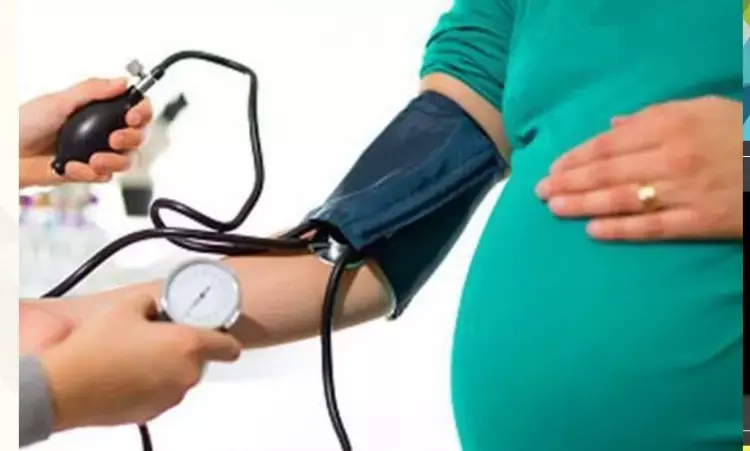- Home
- Medical news & Guidelines
- Anesthesiology
- Cardiology and CTVS
- Critical Care
- Dentistry
- Dermatology
- Diabetes and Endocrinology
- ENT
- Gastroenterology
- Medicine
- Nephrology
- Neurology
- Obstretics-Gynaecology
- Oncology
- Ophthalmology
- Orthopaedics
- Pediatrics-Neonatology
- Psychiatry
- Pulmonology
- Radiology
- Surgery
- Urology
- Laboratory Medicine
- Diet
- Nursing
- Paramedical
- Physiotherapy
- Health news
- Fact Check
- Bone Health Fact Check
- Brain Health Fact Check
- Cancer Related Fact Check
- Child Care Fact Check
- Dental and oral health fact check
- Diabetes and metabolic health fact check
- Diet and Nutrition Fact Check
- Eye and ENT Care Fact Check
- Fitness fact check
- Gut health fact check
- Heart health fact check
- Kidney health fact check
- Medical education fact check
- Men's health fact check
- Respiratory fact check
- Skin and hair care fact check
- Vaccine and Immunization fact check
- Women's health fact check
- AYUSH
- State News
- Andaman and Nicobar Islands
- Andhra Pradesh
- Arunachal Pradesh
- Assam
- Bihar
- Chandigarh
- Chattisgarh
- Dadra and Nagar Haveli
- Daman and Diu
- Delhi
- Goa
- Gujarat
- Haryana
- Himachal Pradesh
- Jammu & Kashmir
- Jharkhand
- Karnataka
- Kerala
- Ladakh
- Lakshadweep
- Madhya Pradesh
- Maharashtra
- Manipur
- Meghalaya
- Mizoram
- Nagaland
- Odisha
- Puducherry
- Punjab
- Rajasthan
- Sikkim
- Tamil Nadu
- Telangana
- Tripura
- Uttar Pradesh
- Uttrakhand
- West Bengal
- Medical Education
- Industry
Hypertension after pregnancy higher among women with a history of spontaneous preterm birth: BJOG

Despite considerable research and attempts to enhance prevention and treatment, cardiovascular disease (CVD) remains the number one cause of death among women in developed countries. Gender differences in the clinical presentation and in the response to therapy of CVD are known to impede the decrease of cardiovascular burden in women.
Currently, the association between hypertensive disorder pregnancy (HDP), such as pre-eclampsia (PE), and elevated cardiovascular risk (CVR) is well established. Because of the possible shared pathophysiological mechanism in placental insufficiency, it has been hypothesised that spontaneous preterm birth (SPTB) also predisposes to increased CVR.
There remains a lack of knowledge about whether SPTB is also associated with overall CVR and there are no studies that differentiate between PTB due to hypertensive disorders and SPTB. Due to the high burden of CVD among women, it is important to investigate which pregnancy complications are associated with CVD. The primary aim of this study by JANSSEN et al was to investigate whether women with a history of SPTB were more often diagnosed with hypertension than were women with a history of an uncomplicated term birth.
In this retrospective case–control study, authors included women with a history of SPTB and compared them with women who had a term birth. All were invited for cardiovascular risk assessment 9–16 years after delivery. Women were recruited from obstetrical databases of the Amsterdam University Medical Centre (UMC), the Netherlands, and gave birth between January 2001 and December 2008. SPTB was defined as preterm birth between 22+6 and 36+6 weeks after spontaneous contractions or spontaneous rupture of membranes.
Main outcome measure was Hypertension. Secondary outcomes included metabolic syndrome, mean blood pressure, anthropometrics, blood and urine sampling, Framingham Risk Score and Systematic Coronary Risk Evaluation.
A history of SPTB was significantly associated with hypertension; adjusted odds ratio 1.60 (p = 0.033). Abdominal obesity was more often diagnosed after SPTB (p = 0.003) and was more pronounced with more severe preterm birth (p = 0.002).
In this case–control study, authors found a statistically significantly higher presence of hypertension in women with a history of SPTB than in women with a history of an uncomplicated term birth in the fifth decade of life. They found that 38% of the women with a history of SPTB had hypertension 9–16years after pregnancy. This prevalence is higher than the general Dutch female population within this age group (14.9%) and was also statistically significantly higher compared with controls after adjustment for confounders. Mean DBP was statistically significantly higher among women with a history of SPTB. Abdominal obesity was diagnosed statistically significantly more often among women with a history of SPTB and was associated with the severity of preterm birth.
Women with SPTB were more often diagnosed with hypertension 9–16 years after pregnancy compared with women with an uncomplicated term pregnancy. Future research is necessary to determine whether women with a history of SPTB should be regarded as high risk in cardiovascular screening programmes.
Source: JANSSEN et al; The association between spontaneous preterm birth and maternal hypertension in the fifth decade of life: a retrospective case–control study. BJOG: Int J Obstet Gy. 2022;00:1–7. https://doi.org/10.1111/1471- 0528.17368
MBBS, MD Obstetrics and Gynecology
Dr Nirali Kapoor has completed her MBBS from GMC Jamnagar and MD Obstetrics and Gynecology from AIIMS Rishikesh. She underwent training in trauma/emergency medicine non academic residency in AIIMS Delhi for an year after her MBBS. Post her MD, she has joined in a Multispeciality hospital in Amritsar. She is actively involved in cases concerning fetal medicine, infertility and minimal invasive procedures as well as research activities involved around the fields of interest.
Dr Kamal Kant Kohli-MBBS, DTCD- a chest specialist with more than 30 years of practice and a flair for writing clinical articles, Dr Kamal Kant Kohli joined Medical Dialogues as a Chief Editor of Medical News. Besides writing articles, as an editor, he proofreads and verifies all the medical content published on Medical Dialogues including those coming from journals, studies,medical conferences,guidelines etc. Email: drkohli@medicaldialogues.in. Contact no. 011-43720751


